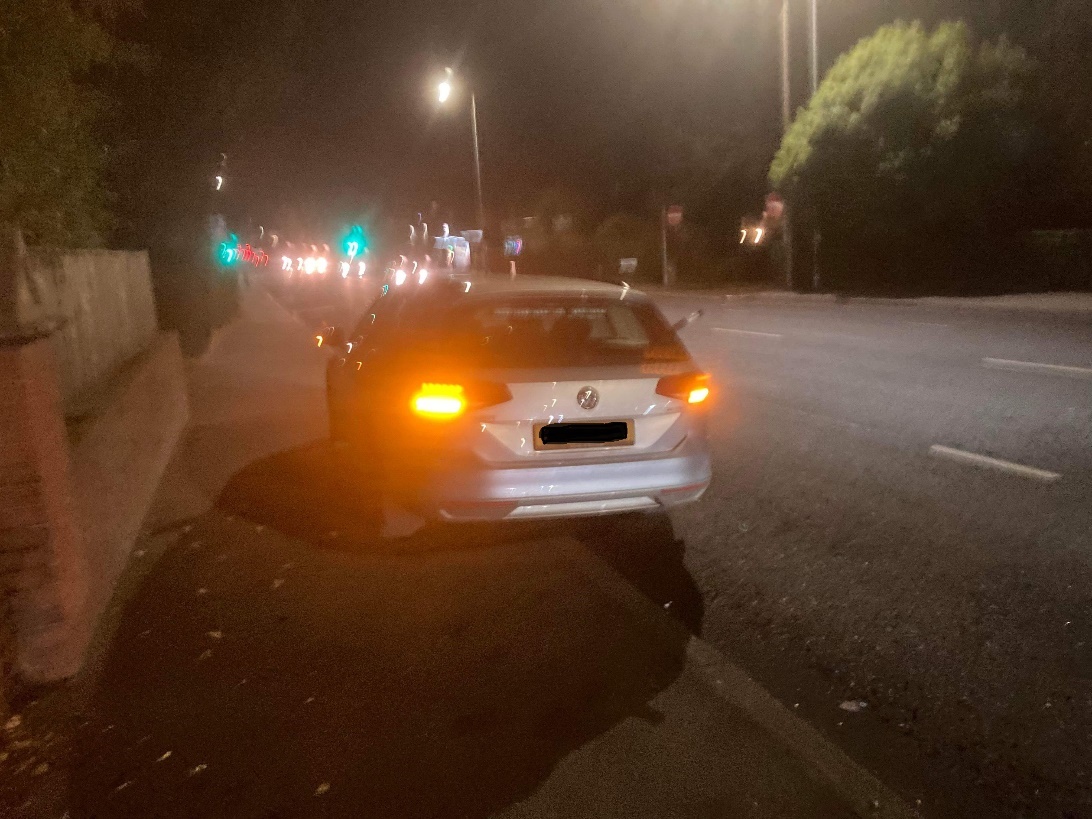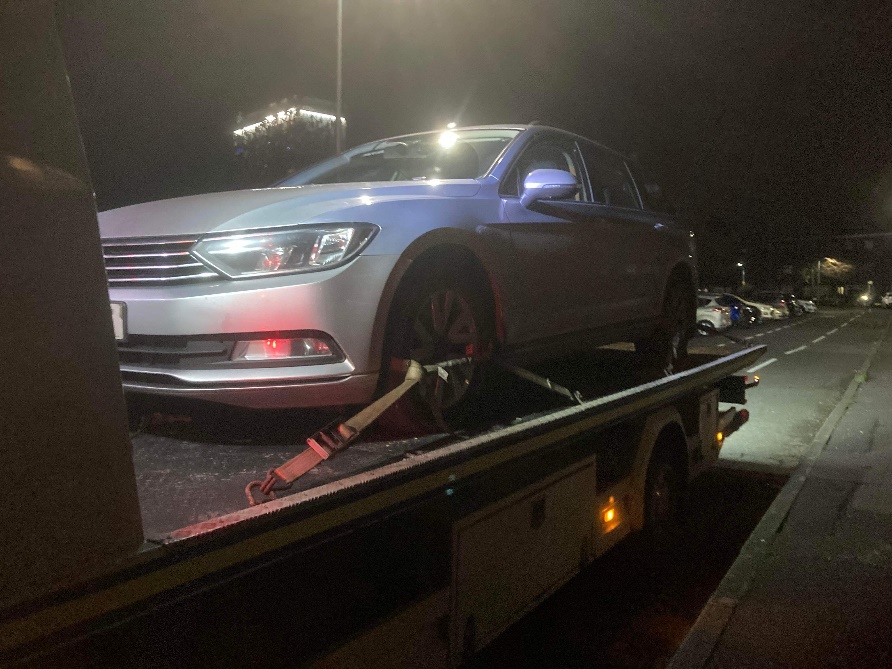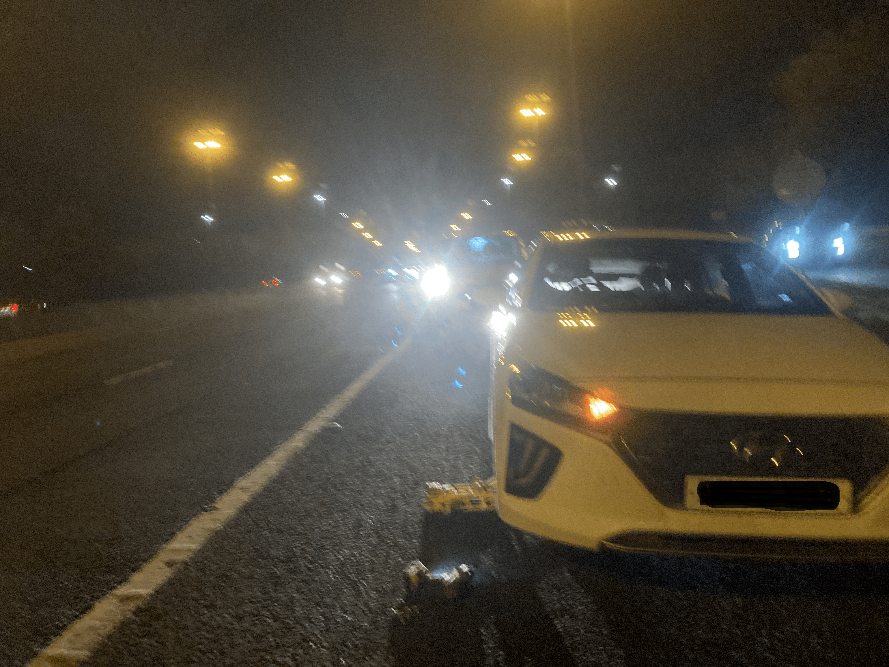Four times. That’s how many times in four days I had to call the AA out between two different cars, one of which was the courtesy car I’d been lent following my car breaking down the first time. This is what I learned.
I work in Craigavon, smack-dab in between Portadown and Lurgan, but I live in East Belfast. From my work to my front door is about 36 miles. I managed to get to within three minutes of home when my car died, and it really died, computer and lights went haywire, the engine started to fail, lights all failed, by some miracle though my hazard lights remained working, just about.
As I arrived at work that morning, I got a warning on my dash saying “12-volt system not charging. Stop vehicle”, it would turn out that my alternator had failed. This little device is an electric generator that is turned by the engine using, in my car, the same belt that also runs the air conditioning system. The alternator is responsible for charging the battery while the engine is running so without it my battery will discharge while I’m driving. This means that eventually, I’ll lose lights, computer, infotainment system as well as power steering and eventually the engine as it requires a fuel pump which is powered off the discharging battery. Fortunately, I was able to charge the battery while at work to make sure it was fully topped up, but unfortunately, that wouldn’t be enough to get me completely home. In hindsight, had I thought to unplug the fuses for the non-essential systems in the car such as the infotainment system, my dashcam which is hardwired and the illuminated switches, I might have been able to make it.

Figure 1 – First AA call out.
I’d break down just past Barnardos on the Newtownards Road and coast to a stop outside an apartment building. Before leaving work, I’d had the foresight to run over the Halfords and buy an AA branded 3-in-1 torch which included a red flashing LED beacon which was now magnetically attached to the side of my car, I also set up the cars warning triangle, the first time I’d had to use it since I starting driving little over a year ago. I don’t know why it’s called 3-in-1 when it has four features but anyway. I got these two devices setup and had my hazard lights running for however long the remaining battery power would last and made my first call to the AA.
With my previous years car insurance, I’d had RAC breakdown cover included with the policy and had only had to call them once for a flat battery during the coldest night that year, ironically, I was at work in Craigavon, at least I made it to within walking distance of home this time.
The AA said they’d have someone out within an hour, I think it was about forty-five minutes before they arrived. The person that arrived wasn’t a mechanic that I could see, rather his job was recovery, not repair. In this particular case he attached a battery jump starter to the car to get my engine going again before heading off to another call in Belfast. Unfortunately for both him and me, he’d be coming straight back out to me within about thirty minutes as I made it from Barnardos to the entry of Stormont Estate, or rather managed to coast in by the skin of my bumper before the engine completely gave out, this time not even the hazard lights were running.
After returning to me the recovery guy knew he wasn’t jumping me so instead immediately loaded my car onto the back of his flatbed and drove my the literal two minutes back to my flat and got the engine going long enough to coast her into a parking space, not straight but at least it was parked.

Figure 2 – Second AA Call out of the night.
The next day I’d call the AA out for a third time to figure out what was wrong, this time with an AA mechanic and the classic yellow van showing up, he diagnosed a faulty alternator which I’d suspected and managed to get me to a mechanic for it to be repaired.
After this the AA provided me with a courtesy car which I planned on using for university and work, this was short lived however with the car developing a puncture less than two hours after it was dropped off to me in at the university campus in Coleraine, I’d wind up broken down in between the Belfast bound lanes of the M2 and the Fortwilliam onramp. So que AA call out number four, while my breakdown cover covers me personally in any vehicle rather than a particular vehicle, I also found that not surprisingly my AA courtesy car, which was provided by Enterprise, was covered by the AA also. Again, I got a mechanic with a yellow van who quickly replaced my flat tire with one of their multipurpose spares and an adapter to mount the temporary tire on to allow me to get home in one piece, once back he removed the temporary tire and checked my flat. He found a large hole, possibly a nail or something similar and carried out a repair, got it reinflated but advised that I take it to a mechanics to be checked properly in daylight.
The next day I did just that with Gilnahirk Tires only five minutes down the carriageway from me but after a quick inspection the mechanic was happy enough that the repair was solid and without charging me I was able to leave for work.
Fortunately, this was the end of my breakdowns, at least for now, give it time.

Figure 3 – AA to the rescue, for the fourth time.
What did I learn?
Like most things, I learned a lot more from things going wrong than when they are going right, what I did learn includes the following.
Have Breakdown cover.
With my previous year’s insurance I had RAC breakdown cover included as part of the policy, but I released only a month earlier that I didn’t have any breakdown cover with my current insurance so had to quickly take out AA cover which my dad swears by. As you’ve just read that was essential. The courtesy car had its own breakdown cover, but my car would have been stuck without it, so make sure you have breakdown cover of some kind. It’s also worth looking at the optional extras. I have Onward Travel with the AA which means they will arrange for me to be taken to my intended destination rather than the nearest garage and also includes a courtesy car for three days though I’d pay to add an extra two to use it for work. Another feature, though I’m not sure if it was used for my car’s breakdown, was cover within ¼ of a mile of your registered home address. Some breakdown providers won’t recover you if you break down within a quarter mile of your home so it’s worth also having.
The lesson, have breakdown cover and have their contact details, the AA have an app that can make requesting help a lot easier but I also saved the phone number to my phone, plus they send out a membership card which lives in my car with my membership number which you’ll also need to requesting help.
Car emergency kit.
Having emergency supplies in your vehicle are essential. Sadly, I made a mistake with this. While I had a high visibility and reflective vest, LED warning beacon and range of other items in my own car, I didn’t have the chance to move it over to the courtesy car before it broke down so I was stuck on the side of the motorway dressed in black from beanie hat to boots, at night, with nowhere safe to stand while the tire was being changed. I also didn’t have the warning beacon which, while I had functioning hazard lights, I would have felt better having that extra layer of safety to make myself more visible. I also lacked any warm clothing which again was in my own car, with me I had only a lightweight cycling fleece and a lightweight softshell which was fine indoors but not on the side of a motorcycle in zero-degree weather.
The lesson is if you’re using a courtesy car, having your high visibility vest and warm jacket at least with your, you’ll never know when you need it until you do. It’s better to have it and not need it than need it and not have it.
Mobile phone.
Before I left work on the day my car broke down, I knew there might be an issue so I have my mobile fully charged as well as the portable battery pack in my rucksack. With my car’s electrical system dead that was useful to have, so always travel with a charged phone and some form of independent battery power, don’t rely on the car to charge your phone.
Know your location.
Next time you are driving, say to work or better yet going on holiday or a route you don’t normally use, pick a random location and image you’ve broken down. If you rang for assistance, whether that be breakdown recovery or emergency services, would you be able to give a reliable location?
If like my first breakdown you can say “next to Barnardos on the Newtownards Road in Belfast” then you’re in a better situation than most as a lot of people wouldn’t be able to give their reliable location, outside of Belfast I couldn’t navigate independently to save my life. A simple way is an app called “What Three Words”, I’m familiar with it from my volunteer work in St John Ambulance as we use it for our operational orders to identify key locations such as treatment centres, but it is useful in any situation where you may need to find your exact location. It gives you three words which correspond to a three-square meter location anywhere on Earth. For example, if you type in gums.coats.backs you’ll get the exact location I broke down on the M2 motorway, or bolts.until.insect and you’ll get my exact location from when I power electrical power the first time I called them out. The words must be spelt accurately, so bolts rather than bolt, but when done right, it is very effective at getting your location.
The What Three Words app is available on iOS and Android, and I’d strongly recommend both downloading it and being aware of how to use it, the AA uses the system to locate service users. This app could also be used for people who live remotely in the country or to direct search and rescue operations as well as general 999 emergency calls or planning out hiking route cards. It’s well worth looking into and making family members aware of. On iOS it can actually integrate into your home screen, so you don’t even need to open the app to get your location, I don’t know about Android.

